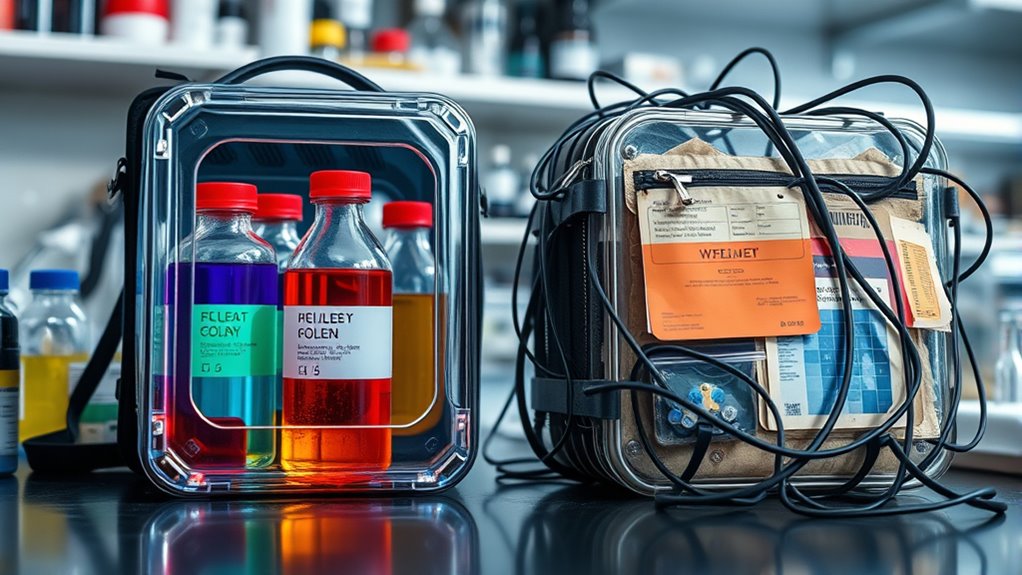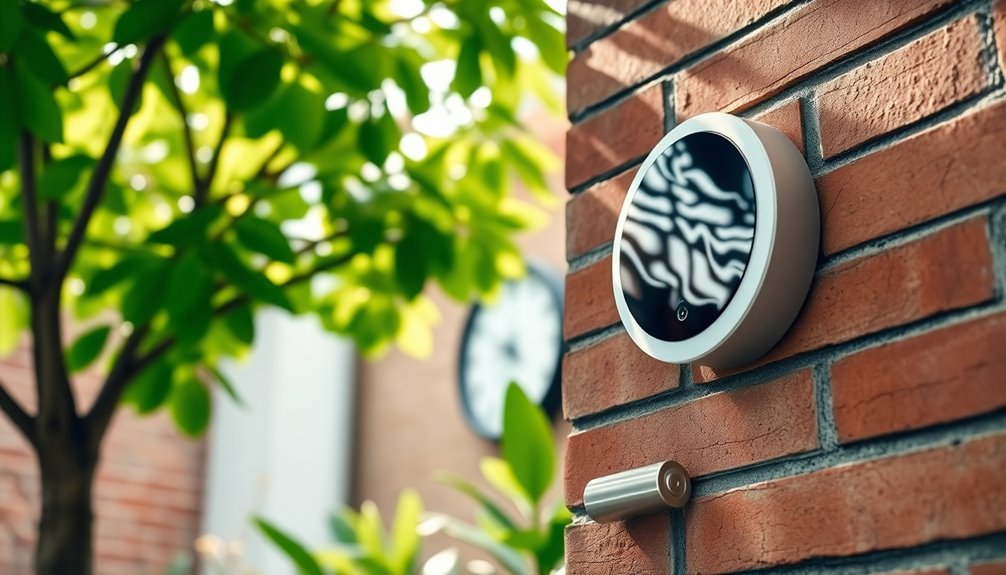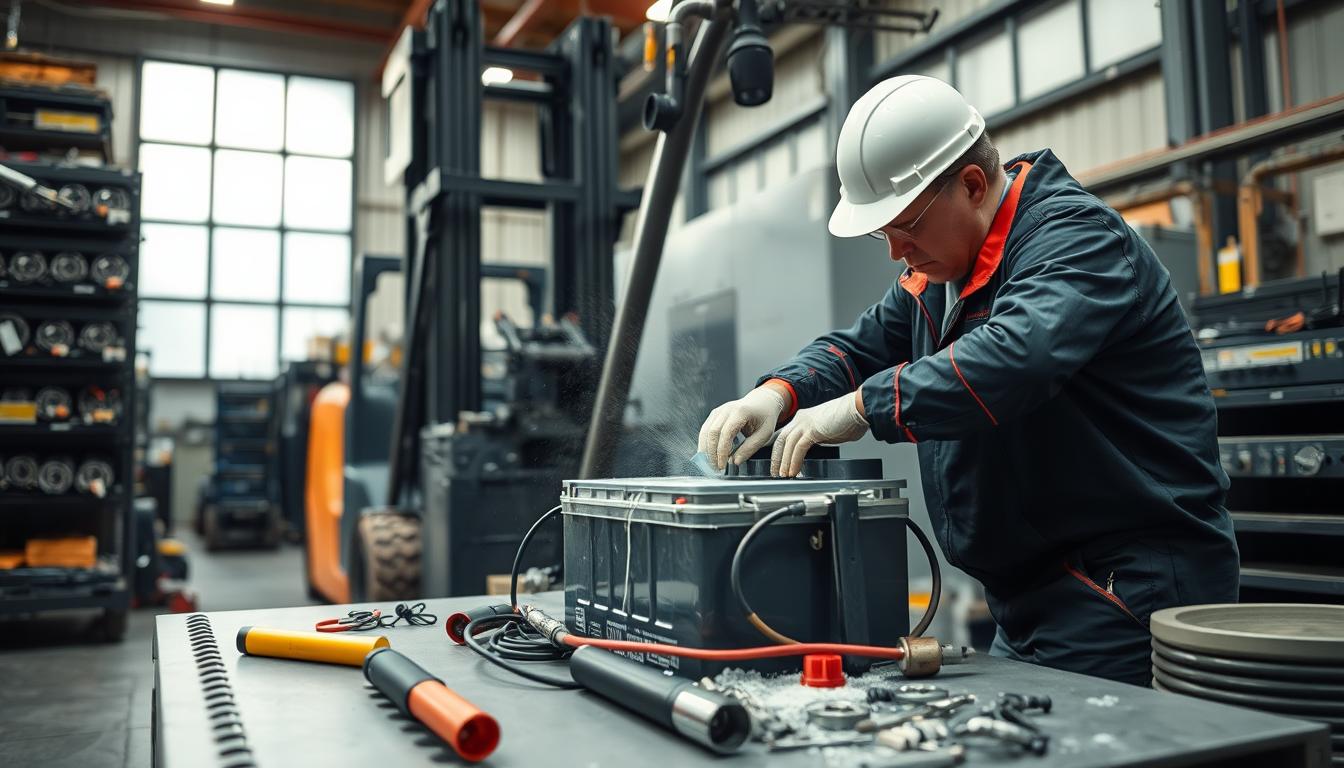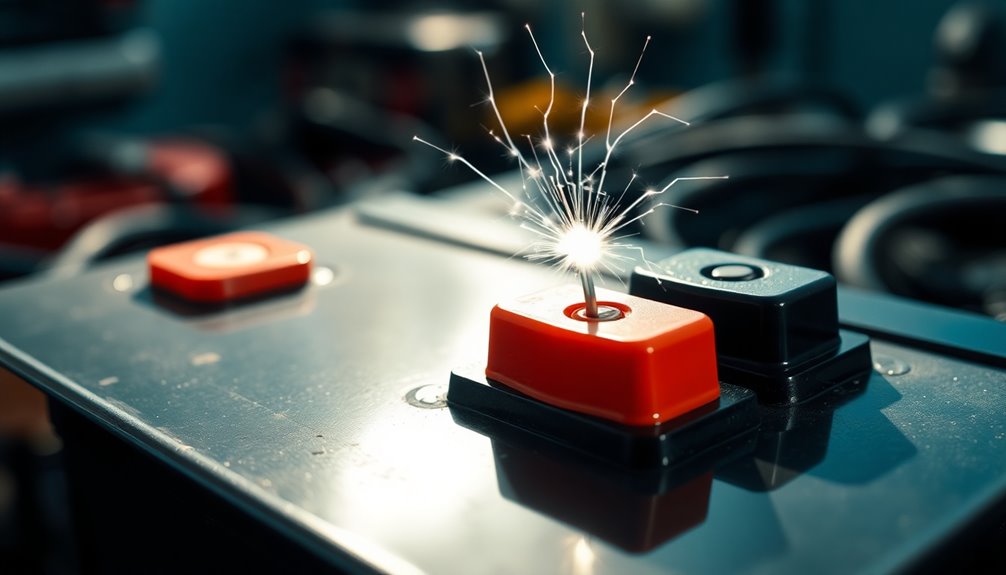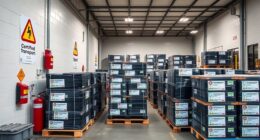Dual-chemistry packs can streamline your workflows by combining two reagents into one unit, saving time and reducing handling. However, they also introduce challenges like compatibility issues, installation complexities, and safety risks if not properly managed. If chemicals react adversely or installation isn’t precise, you could face equipment damage or unreliable results. To master the balance between convenience and caution, understanding the key factors involved will guide you toward safer, more effective use.
Key Takeaways
- Dual-chemistry packs streamline workflows but require thorough compatibility testing to prevent adverse reactions.
- Proper installation and specialized connectors are essential to avoid setup delays and equipment damage.
- They reduce reagent handling and disposal, saving time but may increase complexity if compatibility issues arise.
- Incompatible chemicals can cause inaccurate results and safety hazards, making careful planning critical.
- When correctly implemented, they combine convenience with efficiency, but poor setup can lead to maintenance challenges.

Have you ever wondered how to simplify complex chemical testing processes? If you’re considering dual-chemistry packs, understanding their advantages and drawbacks is vital. These packs combine two different chemicals in a single unit, offering the potential to streamline testing procedures. However, one of the main concerns with dual-chemistry packs relates to chemical compatibility. When designing these systems, manufacturers must verify that the chemicals don’t react adversely with each other, which could compromise test results or create safety hazards. If incompatible chemicals are combined, you risk inaccurate readings, equipment damage, or even dangerous chemical reactions. This means that selecting compatible chemicals isn’t just a best practice—it’s indispensable for both safety and reliability.
Installation challenges are another factor you’ll need to contemplate. Dual-chemistry packs often require precise installation procedures, especially if they involve specialized connectors or integrated delivery systems. You might find that fitting these packs into existing testing setups demands additional training or modifications to your setup. In some cases, the physical constraints of your laboratory or testing environment can make installation more complicated. For example, space limitations or incompatible fittings can turn what seems like a straightforward upgrade into a time-consuming and labor-intensive task. Failure to account for these challenges upfront can lead to delays, increased costs, or the need for repeated adjustments.
Despite these hurdles, dual-chemistry packs can offer significant benefits if implemented correctly. They reduce the number of separate reagents you need to handle, store, and dispose of, saving time and minimizing errors. They also help streamline workflows, especially when you’re conducting multiple tests that require different chemicals. The key is to weigh these benefits against the installation challenges and potential compatibility issues. Proper planning involves thorough testing of chemical compatibility beforehand and consulting with manufacturers or suppliers about installation requirements. Verifying that your lab or testing site can accommodate the setup without significant modifications will save you headaches down the line. Additionally, understanding the importance of attention during setup and operation can help ensure safety and optimal performance.
Frequently Asked Questions
How Do Dual-Chemistry Packs Compare in Cost to Single-Chemistry Systems?
When comparing costs, dual-chemistry packs often have higher initial expenses than single-chemistry systems due to their complexity. However, you might find they offer better economic considerations over time by reducing the need for multiple setups and simplifying maintenance. While the upfront cost is higher, the long-term savings and flexibility can outweigh this, making dual-chemistry packs a cost-effective option for many applications.
Are Dual-Chemistry Packs Suitable for All Types of Cooling Systems?
You might wonder if dual-chemistry packs suit all cooling systems. While they offer versatility, system compatibility varies, and not every setup can handle both chemistries effectively. Installation challenges can arise, especially if your system isn’t designed for dual chemistries. Before choosing, check your system’s specifications and consult professionals to guarantee seamless integration, avoiding potential issues and maximizing performance.
What Safety Precautions Are Necessary When Handling Dual-Chemistry Packs?
Handling dual-chemistry packs blends danger with necessity. You must prioritize safety by wearing proper protective gear during chemical handling and ensuring good ventilation. Safety training is essential to understand each chemical’s hazards and proper disposal methods. Keep emergency equipment nearby, like eye wash stations and spill kits. By staying vigilant and following safety protocols, you protect yourself and maintain system integrity, turning potential risks into controlled, safe operations.
How Often Should Dual-Chemistry Packs Be Replaced or Maintained?
You should check the replacement frequency for dual-chemistry packs regularly to maintain chemical stability. Typically, manufacturers recommend replacing them every 6 to 12 months, depending on usage and storage conditions. Regular maintenance ensures the chemistry remains effective and safe. Keep an eye on signs of deterioration, such as leaks or discoloration, and follow your specific product guidelines to prevent issues and guarantee peak performance.
Can Dual-Chemistry Packs Be Customized for Specific Applications?
Think of dual-chemistry packs as a tailor-made suit—you can adjust them to fit your needs perfectly. You can customize these packs with various options to suit your specific application, making adjustments for temperature, chemistry, or flow rates. This flexibility allows you to optimize performance and efficiency. With proper customization options and application-specific adjustments, you get a solution tailored precisely to your unique demands, maximizing effectiveness.
Conclusion
So, you weigh the perks of dual-chemistry packs against the potential headache of maintenance. While they offer the best of both worlds—speed and versatility—they can turn your lab into a bit of a mad scientist’s lair if not managed properly. Think of it like trying to tame a dragon in the age of the Renaissance—exciting but risky. Ultimately, careful planning keeps these packs from becoming your own personal Pandora’s box.

